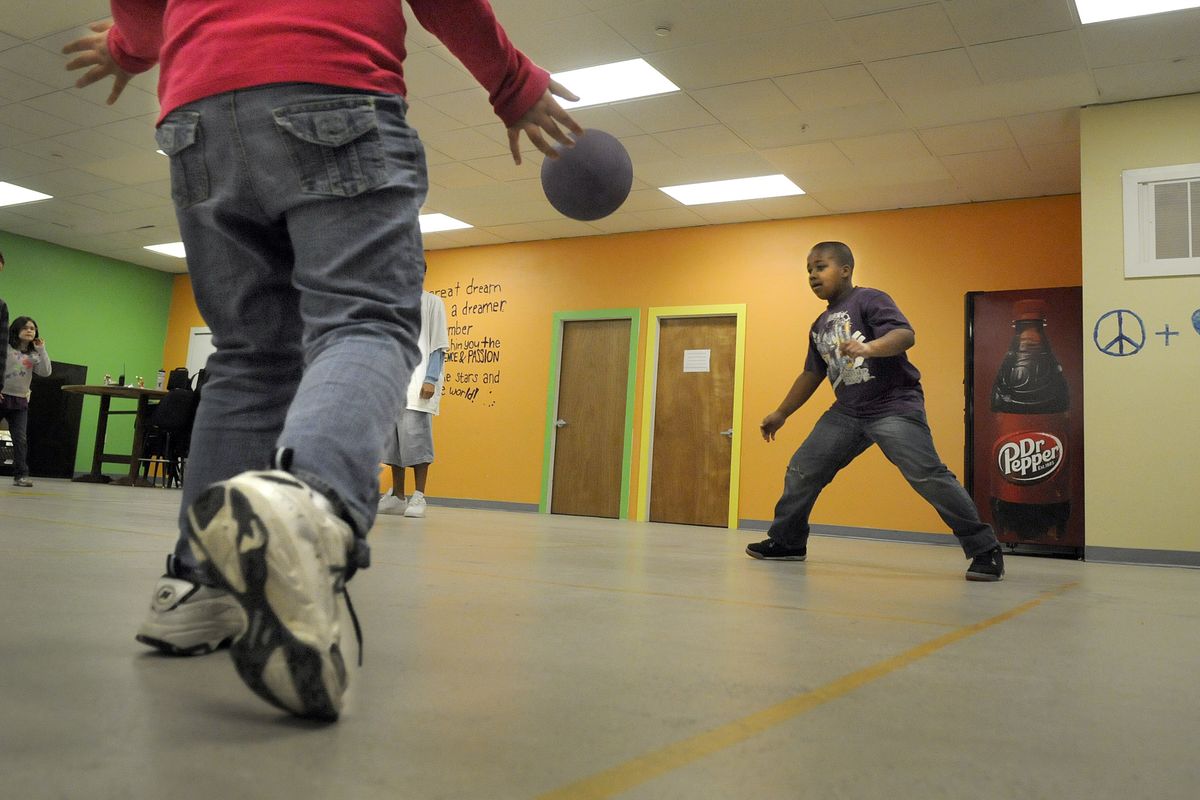Day care feels pinch of state’s cuts
Enrollment declines as subsidies end for some

Karen Holmes is losing sleep these days. She’s the director of the North East Youth Center in Hillyard, so there’s plenty to worry about in terms of taking care of 70 children before and after school, but lately there’s one specific issue that keeps her up at night.
“Just in the last three months we have lost about 20 percent of our children, compared to this time last year, because of cuts in state child care subsidies,” said Holmes. “The notifications arrive from the state every day that such-and-such family will no longer receive a child care subsidy.”
The children who lose their daycare spots are from low-income families. Many come from single-provider households, some have parents in jail and some have behavioral problems stemming from early childhood trauma.
“It’s especially hard on the one-on-one kids,” said Holmes. These are kids who need a teacher with them at all times because they have severe behavioral issues.
“We know they don’t have anywhere else to go,” said Holmes. “The lucky ones are cared for by able grandparents. But many are cared for by older siblings who are still too young, or a random person who lives on their block.”
One thing that really concerns her is the return of the latchkey kid of the ’80s.
“I don’t want to see that again. Neighborhood crime goes up between 3 and 6 p.m. when children are unsupervised,” said Holmes. “That’s when they run around the neighborhood and burn down things or get in other trouble.”
North East Youth Center has operated as a licensed child care center since 2001, and at no other time has Holmes seen comparable cuts in funding.
Cuts to Working Connections Child Care, primarily, are affecting Hillyard kids. In an effort to balance its budget, the state of Washington recently changed the income requirements for parents seeking WCCC subsidies from 200 percent to 175 percent of the federal poverty level, which for a family of four is an annual income of $22,350. A family of four loses the subsidy if the household income is more than $39,112 a year, including child support. Before- and after-school care at NEYC costs $106 a week for a 5-year-old – or $5,512 for 52 weeks.
WCCC covers the entire fee for eligible families.
“That last 25 percent cut really had a huge impact,” said Kathy Thamm, initiative director with Family Care Resources in Spokane. “We do advocacy and we really want to work at getting back up to 200 percent.”
“When they lose the subsidy they sometimes quit their jobs and go on welfare,” said Holmes. “That means the state pays for them anyhow. Or a federal program picks up the tab.”
Holmes explained that a 50-cent-an-hour raise may make the difference as to whether a family is eligible, yet not be enough to cover the cost of child care if the subsidy falls away.
Thamm is familiar with that scenario.
She said Family Care Resources sends out information to human resource departments explaining the impact a small raise can have on a family.
“You’d think a raise is something good for the family, that you are doing something good for people,” said Thamm, “but that raise may cause them to lose their daycare subsidy.”
NEYC is just one child care center dealing with the loss of WCCC subsidies. The cuts are statewide but hit working-poor neighborhoods the hardest.
Across the Spokane area, some child care centers are closing because they are losing subsidized kids; that also impacts families who pay for their own child care, because they have to find new spots.
NEYC is funded by a mix of city funding, Department of Early Learning funding, community development funding, grants and private donations, all knitted together.
Some child care centers are for-profit, but it’s a business with small profit margins.
Thamm has already laid off one-third of her staff, and she’s constantly looking for ways to save money or cut cost without compromising the quality of care the children receive.
“Everything is pretty tight in child care,” said Thamm. “There really isn’t a lot of wriggle room when it comes to funding.”
One thing that would help NEYC is donations for scholarships, said Holmes.
All daycares can receive private donations, but only nonprofit daycares can write a receipt for a tax deduction.
Thamm likes the scholarship idea but would like to see a countywide scholarship fund hosted by a large social services nonprofit.
“That way donors could get a tax deduction and the money could go to where it’s most needed,” said Thamm.
For now, Holmes is somewhat dreading summer when “her kids” will be out of school and many left to their own devices. She gets emotional talking about it.
“It’s just so scary,” said Holmes. “We develop a relationship with these kids and we want them to succeed. The kids just don’t have a voice in all of this.”